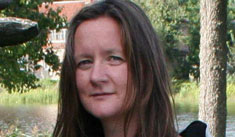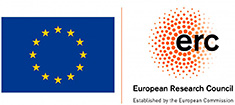TIMBER: Northern Europe’s timber resource - chronology, origin and exploitation
Empirical evidence for the history of the exploitation of the timber resource in Northern Europe is stored in the material record. Archaeological finds, art-historical objects and built heritage have provided us with an extensive dataset of precisely dated wood from cultural heritage contexts. This material is the key to details about the usage, condition and availability of the timber resource and details of trade in timber, with specific reference to the maritime timber trade, from c. AD 1100 to 1700. This is possible because tree-ring studies provide not only the precise felling date for the trees used, but also allow the identification of the tree’s region of origin. However, there are gaps in the material evidence, and other analysis techniques are being explored to supply answers where the tree-ring evidence falls short.
Through study of archival material (such as merchant-books and letters, customs rolls, legal and administrative records), along with targeted analysis of historical timber, the history and dendro-archaeology will be combined to study resource availability, ownership, logistics, economics, market mechanisms and politics of trade in timber as a bulk building material.
Using both tried and trusted methods, incorporating a holistic approach, and developing a range of innovative new procedures including minimal and non-invasive analysis methods, key archaeological structures will be examined. These key constructions are spread throughout the period under examination and each represent a different piece of the timber resource and timber trade puzzle, either temporally or geographically. These specific cases will make it possible for us to investigate specific, but contrasting questions on the regionality, chronology and geography of the maritime timber trade in Northern Europe, over a period of six centuries.
Combining the material and historic records and applying a range of analysis techniques this project will transform our understanding of the past timber trade.
This project has received funding from the European Research Council (ERC) under the European Union’s Horizon 2020 research and innovation programme (grant agreement No. 677152)
With the development of scientific methods for dating and analysing archaeological materials we see increasingly that the scientific results emphasize the complexity of the exchange, invention and development of ideas, as manifested in the design of the buildings and objects that humans made and decorated. This is not least the case in the study of shipbuilding in Northern Europe. As more and more shipwrecks are scientifically dated by dendrochronology, the history and archaeology of shipbuilding technology and traditions through time are redefined.
Provenance determination through dendrochronological analysis is, in addition, revealing the very often complicated process by which the procurement of timbers for shipbuilding and indeed, for other timber constructions and objects, took place, both over time and space. In this project timber in Northern Europe will be studied, to attain a precise chronology for the material evidence for trade of timber over a long time-period, to map the trade in this construction material, to show the regional and temporal fluctuations in timber exploitation and availability and to discover the origin of so-called ‘Baltic’ oak.
In this project the material to be studied can be divided into two broad groups – the local and the traded. To determine the origin of ‘transportable constructions’ (ships, barrels, artworks etc.) we use the remains of historic constructions of timber on land. This is a much more complicated story than might be initially apparent though, as the terrestrial material used in dendrochronology for dating and provenance determination is derived from timbers from historical buildings and archaeological sites – timbers that in themselves have a history of reuse and relocation. This study is therefore divided into the local and the traded timber, or the terrestrial and the maritime, to optimise the possibilities that each category presents and to address the pitfalls that exist in the use of the terrestrial material for determining the provenance of ships and other movable objects and of traded timber on land. Of course, as the material under study is dendrochronological, all of the information being extracted from it is precisely dated. The very precise chronological and geographical framework that it will be possible to achieve will be unique.
The main questions are in two categories, study of timber and methodologies.
Timber
- When does the trade in bulk building timber come to dominate the Northern European timber resource procurement?
- Where did the oaks used to make the numerous so-called ‘Baltic’ wainscots, panels, boards and planks, that were delivered to ports in Western Europe over many centuries, actually grow?
- How does the empirical dataset from tree-ring studies of our archaeological and built heritage compare with the evidence from historical sources, using seven specific case studies?
- What patterns of forest depletion and regeneration can be seen in the tree-ring evidence? What is the chronology of timber availability in different regions, and can regional depletion be shown as a triggering cause of the growth in timber imports?
- What is the proportion of local timber versus imported timber in the tree-ring dataset and how do timbers from different sources differ from each other in terms of quality or properties?
- Does the trade in specialised timber products versus trade in bulk timber show differing regional specialisation or chronology?
Methodology
- Can a combination of provenance determination techniques (dendrochronology, isotopes and aDNA) strengthen the precision to which the source of timber is identified?
- Can recent developments in non-destructive analysis methods be developed further, to allow non-invasive methods to be applied to analysis, in a wider range of conditions or situations?
- Can analysis of a wider range of wood species and younger trees be adopted more widely, to make it possible to draw a more holistic, all-encompassing picture of wood resource utilisation?
Principle investigator
Aoife Daly
University of Copenhagen
Short biography
Postdocs
Postdoc Archaeology
Mike Belasus
University of Copenhagen
Short biography
Postdoc History
Maik Springmann
University of Copenhagen
Short biography
Postdoc Stable isotopes
Alexandra S. Rodler
University of Copenhagen
Short biography
Alicia Van Ham-Meert
University of Copenhagen
Short biography
Postdoc aDNA
Paloma Diaz-Maroto
University of Copenhagen
Short biography
Archaeological research
Fred Hocker
Vasa Museum, Stockholm
Pål Nymoen
Norwegian Maritime Museum, Oslo
Short biography
Jan Bill
Museum of Cultural History, University of Oslo
Short biography
Daniel Dalicsek
Arkeologerna - Statens Historiska Museer
Short biography
Historical research
Carsten Jahnke
University of Copenhagen
Short biography
Bo Fritzbøger
University of Copenhagen
Short biography
Paul Warde
University of Cambridge
Stable isotopes research
Tod Waight
University of Copenhagen
Short biography
aDNA research
Chris Barnes
University of Copenhagen
Short biography
Tree-ring research
Maris Zunde
Institute of Latvian History
Short biography
Alar Läänelaid
University of Tartu
Short biography
Rūtilė Pukienė
National Museum
Palace of the Grand Dukes of Lithuania
Short biography
Videos
About TIMBER
Dendrochronology technique, Vasa Museum
Contact

Aoife Maeliosa Daly
Associate Professor
The SAXO Institute, UCPH
Karen Blixens Plads 8
DK-2300 Copenhagen S
Tel: +45 26 25 41 08
Email: aoife.daly@hum.ku.dk
Web: timber.ku.dk










